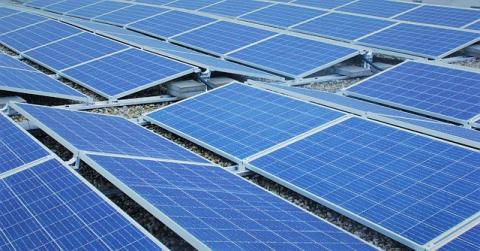
Region: East Asia and Pacific (EAP)
Country: Tuvalu
Sector: Energy and Power
Topic: Fragile and Conflict-Affected States
Keywords: Fragile and Conflict-Affected States - FCS, Solar power
Document Link(s):
Document Summary:
The project features a 40 kW grid-connected solar system that accounts for about 5% of Funafuti’s (Tuvalu’s capital) peak demand, and 3% of TEC’s annual household consumption. The project will contribute to powering Tuvalu’s households, healthcare facilities, small- and medium-sized enterprises and other local development infrastructure, based on a clean renewable energy source.
The e8 Tuvalu Solar Power Project was inaugurated on February 21, 2008, in Funafuti. upon commissioning, the project entered a two-year monitoring period during which the e8 has been overseeing operations and maintenance activities to ensure the project’s sustainability.
Document Details:
The report describes an e8-funded small-scale solar power system project in Tuvalu together with lessons learned and success factors. The e8 comprises of 10 leading electricity companies from the G8 countries promoting sustainable energy development through electricity sector projects and human capacity building activities in developing nations worldwide. The project was inaugurated on February 21, 2008 and intends to decrease reliance on fuel and to enhance renewable energy-based electrification in the small island state of Tuvalu. Tuvalu is one of the places on earth most vulnerable to the effects of climate change. The sea level rise associated with global warming threatens the very livelihood of the 12,000 Tuvaluans residing on the nine extremely low-lying coral atolls. The e8 project i It features a 40 kW grid-connected solar system that accounts for about 5% of Funafuti’s (Tuvalu’s capital) peak demand, and 3% of TEC’s annual household consumption”. Its main objective is to decrease the reliance on fuel and enhancing renewable energy-based electrification.
Updated: November 19, 2022
Related Content
PPPs in Fragile and Conflict-Affected States (FCS)
Type of ResourceModels for Private Sector Engagement in FCS
Type of ResourceSuccess Factors for Private Engagement in FCS
Type of ResourcePPP Institutional, Legal, and Regulatory Frameworks in FCS
Type of ResourceSample PPP Project Documents, Contracts and Contractual Provisions in FCS
Type of ResourceCase Studies in FCS
Type of ResourceFurther Reading and Resources on FCS
Type of Resource